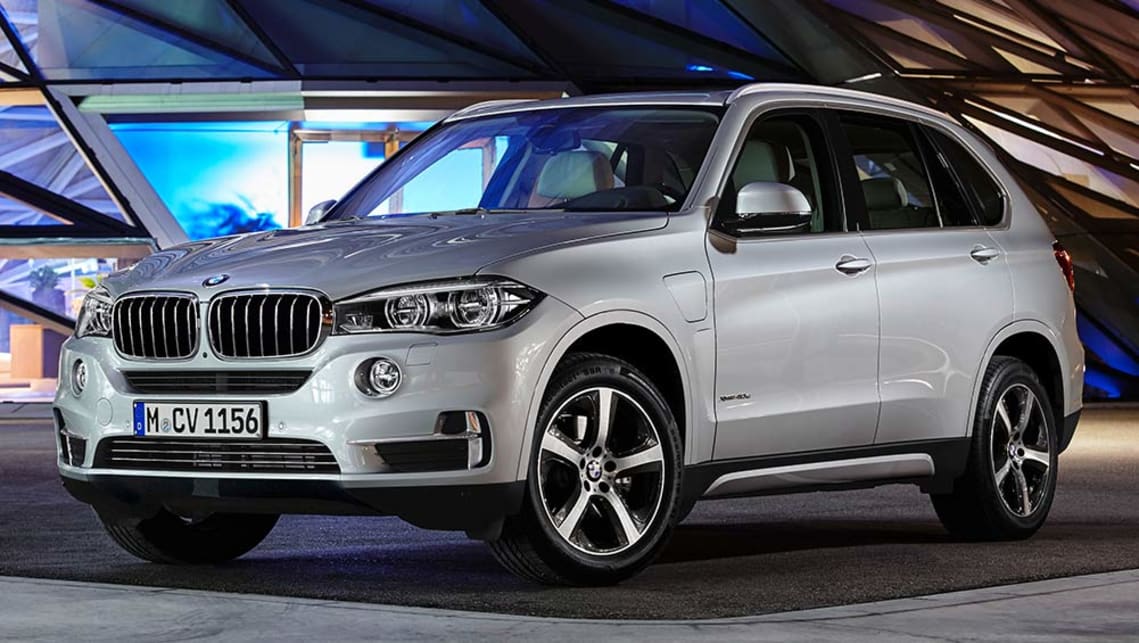
Plug-in hybrid BMW X5 and 3 Series detailed
- BMW 3 Series
- BMW 318i
- BMW 320i
- BMW 320d
- BMW 330i
- BMW 340i
- BMW 330e
- BMW X Models
- BMW X5
- BMW 3 Series 2016
- BMW 318i 2016
- BMW 320i 2016
- BMW 320d 2016
- BMW 330i 2016
- BMW 340i 2016
- BMW 330e 2016
- BMW X Models 2016
- BMW X5 2016
- BMW News
- BMW Sedan Range
- BMW SUV Range
- Sedan
- SUV
- BMW
- Green Cars
- Prestige & Luxury Cars
- Family Cars

Petrol-electric power is coming to BMW's luxury SUV.
The X5 xDrive40e will join the plug-in hybrid electric vehicle — PHEV — version of the 3 Series sedan.
The 40e will reach showrooms in the second quarter, as will the 330e sedan.
To date, the $300,000 i8 super-coupe from the company's "Born Electric" i sub-brand has been the only plug-in hybrid sold here wearing the blue and white roundel badge.
The arrival of the 330e and X5 xDrive40e signals BMW's intent to take this tech to a broader audience.
BMW Australia is yet to finalise pricing but aims to ask only "a small premium" over equivalent petrol and diesel versions.
This should mean price tags of $70,000-$75,000 for the 330e and $125,000 for the X5 xDrive40e.
The lithium-ion battery stores enough zap to power the 40e up to 30km on electricity alone
The plug-in X5 uses the same basic driveline as the 330e.
It has a 2.0-litre turbo engine and eight-speed auto, with an electric motor squeezed between them.
The main difference is that for the bigger and bulkier SUV the power outputs of both petrol engine and electric motor are increased.
Together they punch out a maximum of 230kW, an increase of 45kW compared to the 330e.
That power figure is the same as the turbo diesel 40d version of the X5.
Fuel consumption, thanks to the hybrid hardware, will be almost halved.
The lithium-ion battery pack under the plug-in X5's cargo compartment floor weighs enough to make it a few ticks slower to 100km/h than the 40d.
However, it stores enough zap to power the 40e up to 30km on electricity alone.
BMW has also developed plug-in hybrid tech for models smaller than the X5 and 3 Series.
The main targets for BMW's growing plug-in hybrid array are the US and Japan, where diesel is regarded as dirty
The company's Australian arm has given the thumbs down to the first of these, the 225xe.
There's not a lot of demand for all-wheel-drive crossover mini people-movers, even with a BMW badge.
Australians like SUVs and BMW drivetrain engineers say the hardware of the 225xe is easily fitted to the closely related X1. The components are adaptable to models produced by BMW-owned Mini.
The main targets for BMW's growing plug-in hybrid array are the US and Japan, where diesel is regarded (with good reason, as it turns out) as inherently dirty.
There will be no BMW plug-in hybrids with diesel engines, company engineers promise.
Australia isn't yet turned off diesel but, should attitudes change, BMW will be ready with clean-burning alternatives.








Comments